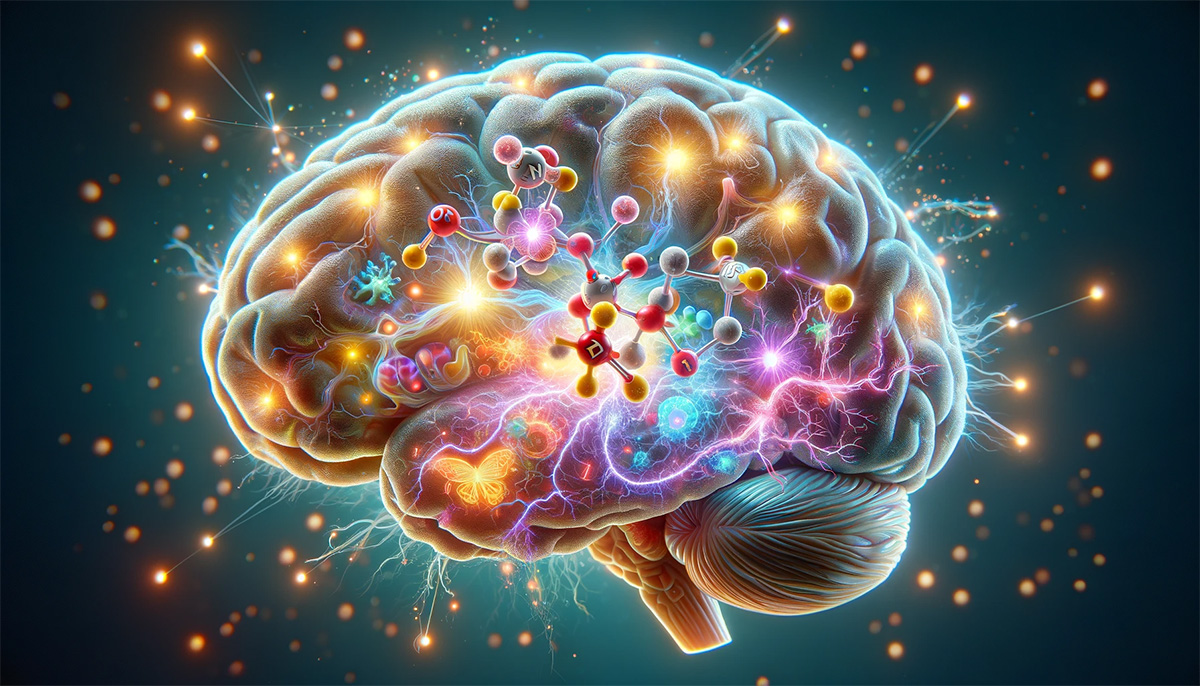Modafinil’s Mechanism of Action Explained: From Dopamine Transport to Orexin Activation
Modafinil is a wakefulness-promoting agent commonly used to treat narcolepsy, shift work sleep disorder, and obstructive sleep apnea. Unlike traditional stimulants such as amphetamine, modafinil enhances alertness through a distinct neurochemical pathway that results in a lower risk of dependence and euphoria. Its mechanism of action involves modest inhibition of the dopamine transporter, indirect activation of orexin and histamine systems, and modulation of GABA, glutamate, and serotonin signaling. This unique pharmacological profile has earned modafinil the classification of an “atypical” CNS stimulant with broad therapeutic potential (Hersey & Tanda, 2025; Greenblatt & Adams, 2025).
Dopamine Transporter Inhibition
One of modafinil’s primary and most well-documented actions is its weak inhibition of the dopamine transporter (DAT), which leads to increased extracellular dopamine in key brain regions like the striatum and nucleus accumbens (Hersey & Tanda, 2025; Gerrard & Malcolm, 2007). Although its binding affinity to DAT is relatively low compared to traditional stimulants, modafinil still raises dopamine levels enough to enhance alertness without causing a strong euphoric “high” (Greenblatt & Adams, 2025).
Key Insight: PET imaging studies have confirmed that modafinil displaces radioligands from DAT, supporting its role as a dopamine reuptake inhibitor (Hersey & Tanda, 2025).
Orexin and Histamine Pathway Activation
Modafinil also activates orexin (hypocretin) neurons in the hypothalamus, which are critical for regulating arousal and wakefulness (FDA, 2007). Orexin then stimulates histamine neurons in the tuberomammillary nucleus, further promoting wakefulness. This dual mechanism helps explain why modafinil is effective even in people who lack traditional dopaminergic tone (e.g., orexin-deficient narcoleptic models) (Gerrard & Malcolm, 2007).
Note: Although orexin is not the only mechanism behind modafinil’s wake-promoting effects, its role is essential in sustaining prolonged alertness.
Effects on Other Neurotransmitters
Norepinephrine and Serotonin
Modafinil indirectly increases norepinephrine and serotonin concentrations in the prefrontal cortex and hypothalamus (Greenblatt & Adams, 2025). These changes likely stem from elevated dopamine levels, as dopamine and norepinephrine systems often interact (Hersey & Tanda, 2025).
GABA and Glutamate
In animal studies, modafinil has been shown to reduce GABAergic tone and increase glutamatergic transmission, especially in the hypothalamus, thalamus, and hippocampus (Gerrard & Malcolm, 2007; Hersey & Tanda, 2025). This combination contributes to increased cortical activation and improved cognitive performance.
These neurotransmitter modulations may help explain modafinil’s off-label use for conditions like ADHD, depression, and cognitive fatigue.
Pharmacological Profile and Safety
Unlike amphetamines, modafinil is not a direct dopamine receptor agonist. It does not significantly bind to serotonin or norepinephrine transporters in vivo and is considered to have low abuse potential (FDA, 2007). While it shares DAT inhibition with drugs like cocaine and methylphenidate, its “atypical” pharmacodynamics reduce the risk of addiction (Hersey & Tanda, 2025).
Explain It to Me Like I’m 12
Think of your brain like a big office building. Inside, you’ve got lots of workers (your brain chemicals) doing different jobs to keep you focused, alert, or sleepy.
Normally, the dopamine worker sends messages that help you feel motivated and awake—but the cleanup crew comes in quickly and clears those messages away. What modafinil does is quietly tell the cleanup crew to take a break. That way, the dopamine messages stay up longer, helping you stay focused without feeling overwhelmed.
Then there’s the orexin team—they’re in charge of flipping on the building’s lights in the morning. Modafinil gives them a little boost too, so they turn on more lights and keep the energy flowing.
The cool thing? Modafinil doesn’t crash the building like a wrecking ball (like some stimulants do). It’s more like a smart assistant who opens the blinds, brings coffee, and gets everyone working—without the chaos.
Conclusion
Modafinil’s mechanism of action is multi-faceted, involving a combination of mild dopamine transporter inhibition and indirect modulation of orexin, glutamate, GABA, serotonin, and norepinephrine. This unique neurochemical profile underlies its effectiveness as a wake-promoting agent with a lower abuse potential than traditional stimulants. With continued research, our understanding of modafinil’s role in cognitive enhancement and neuroprotection continues to evolve (Hersey & Tanda, 2025).
References
- U.S. Food and Drug Administration. (2007). PROVIGIL® (modafinil) tablets [Prescribing information]. U.S. Department of Health and Human Services. https://www.accessdata.fda.gov/drugsatfda_docs/label/2007/020717s020s013s018lbl.pdf
- Hersey, M., & Tanda, G. (2024). Modafinil, an atypical CNS stimulant? Advances in Pharmacology, 99, 287–326. https://doi.org/10.1016/bs.apha.2023.10.006
- Greenblatt, K., & Adams, N. (2025). Modafinil. In StatPearls [Internet]. StatPearls Publishing. https://www.ncbi.nlm.nih.gov/books/NBK531476/
- Gerrard, P., & Malcolm, R. (2007). Mechanisms of modafinil: A review of current research. Neuropsychiatric Disease and Treatment, 3(3), 349–364. https://pmc.ncbi.nlm.nih.gov/articles/PMC2654794/








